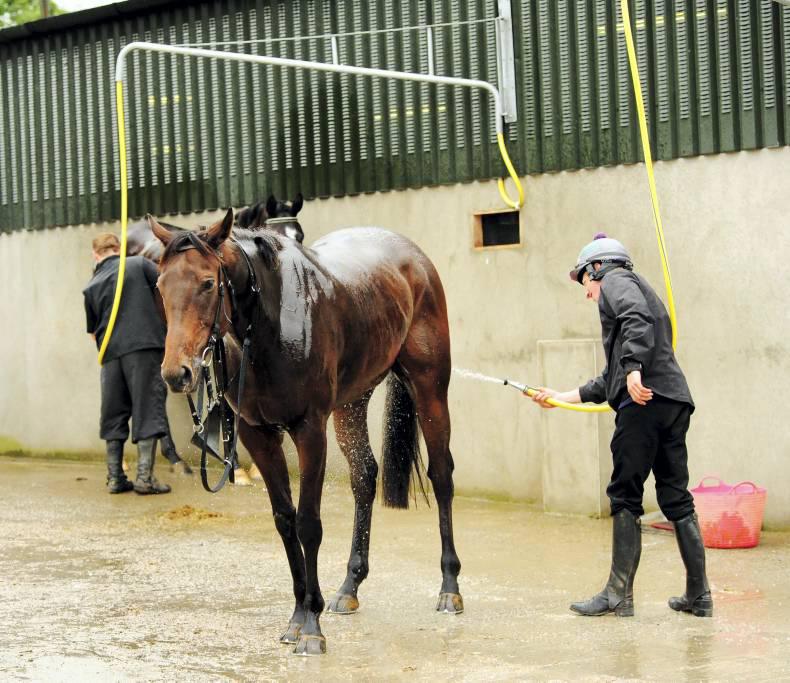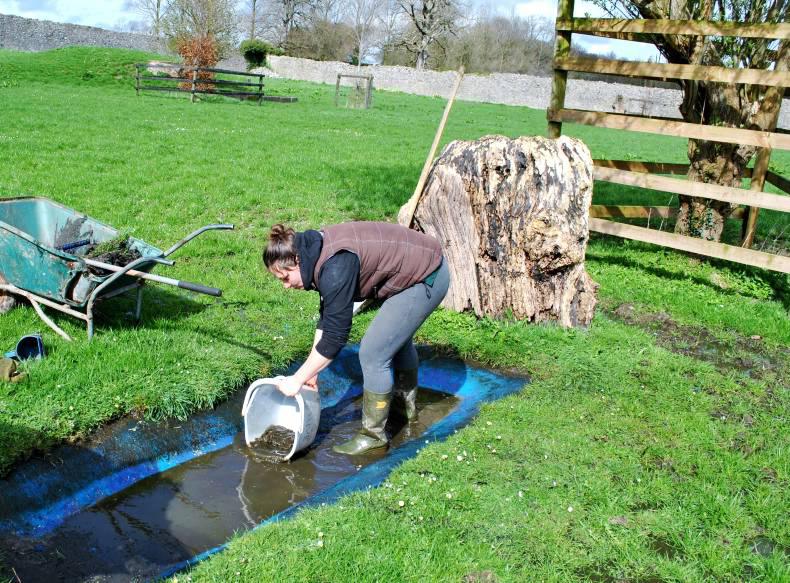The storms from last December and January have left their mark on many properties, especially those in exposed areas.
Now that conditions have settled down it’s time to carry out a comprehensive check of all buildings, fixtures and fittings. A loose slate or protruding nail can do terrible damage, so it really is worthwhile to take the time now to ensure everything is in order.
Disinfection of equine premises provides a challenge to yard managers, due to the variety of surfaces that may be contaminated and the wide variety of horse pathogens.
Scientific evidence has proven that disinfectants work in fighting disease in the yard but what else within the yard’s infrastructure should we be checking?
ROOF
Check for loose or damaged slates or metal.Check for leaks.Remove any leaves or debris.Check for rust forming on metal roofs.Repair or replace any damaged or worn items.Paint, if necessary.Tip: Standing in your stable or barn during heavy rain will help determine any leakage.
WINDOWS, DOORS & LOCKS
Check all mechanisms for proper working order.Remove, vacuum, or wipe down, etc, any debris from in and around these areas.Clean window panes and let that sunshine in.Lubricate all hinges, latches, locks, springs, rollers, etc, (olive oil works well).Check for nesting insects – carefully remove or call in the professionals.Repair or replace any damaged items.FENCING & GATES
Check for broken or protruding rails and nails.Check for rust.Check for loose posts.Fill holes in front of gates, doors, etc.Check locks and latches. Lubricate, repair and replace, if necessary.Secure, repair or replace areas in need.Paint, if necessary.GUTTERS AND DOWN SPOUTS
Check for any loose parts in your gutter system.Check for leaks.Check for any blockages - leaves or debris can block gutters, clean them out.Repair or replace any damaged or worn items.Tip: Sometimes flushing the gutters with a water hose will help determine leakage and may help remove some clogged debris.
WATER
Check all water devices for proper working order – hoses, pipes, troughs, spouts and faucets – freezing temperatures during the winter months can cause damage.Repair or replace any damaged items.Clean all water troughs thoroughly.Tip: White vinegar is excellent for cleaning buckets and troughs. It rinses clean and if added to drinking water inhibits the growth of algae and great health benefits for your horse.
YARD, PADDOCK & GRAZING
Check for holes, falling branches, trees, rocks or debris.Fill holes and remove debris.Remove any large piles of organic material i.e. old hay, manure, shavings, etc. from your property. In addition to being unsightly, they attract pests and the build up of heat could ignite a fire.Tips: Keep horses off wet pastures until they are dry and the grass is a few inches high.
In spring, turnout should be on a limited basis and the amount of time grazing should be increased slowly so the horses do not get sick from the rich grass. Use riding rings, round pens, etc. for some hours during the day so the horses may still enjoy outside but limiting time on the rich grass.
If possible, it is best to rotate turnout areas.
INSIDE STABLE BLOCK OR BARN
Clean facility completely.Clean away cobwebs and remember start from the top and work your way down to the floor – don’t forget the corners, shelves, removable items, etc.Check fire extinguishers/smoke detectors.Disinfect all surfaces thoroughly.Tip: Invest in a vacuum for your yard, as it will catch the fine dust that becomes airborne in the stable block when you sweep.
WALLS & STALLS
Check for any protruding objects.Repair and/or replace any damaged wood, metal, etc.Check your stall floor – it should be dry and level.Strip down and remove bedding from stalls.If you have mats, remove and check for repair.Before restoring floors and adding fresh bedding, scrub and disinfect the walls and floors.Remember to remove all buckets, feed tubs, toys, etc. before the scrubbing and disinfecting procedures. Open all windows and doors for adequate ventilation.Let the stable air dry on a nice sunny, breezy day. Sunlight can be a great disinfectant - it is natural, economical and eco-friendly!Remember to scrub and disinfect mats too – let dry in the sun.Check feed bins/hay racks/toys, etc. for looseness and or repairs.Tips: Use a pressure washer for cleaning stable walls and other partitions/walls inside your barn.
Use a garden sprayer to disinfect stall walls. Varnish or paint the wood or concrete in stalls. This helps minimise bacterial, fungal and viral organisms from penetrating these porous materials.
GENERAL AREAS
Check drains in wash bays, sinks, etc. – keep clog-free.Clean the wash bay walls – may require scrubbing and disinfecting.Clean aisles – may require scrubbing and disinfecting.Tip: When working in or around your stables or barn, remember to clean up the debris from your projects – nails, glass, wire, metal, etc. It is best for you to find these waiting problems before your horse does.
TACK ROOM
Wipe down and clean any storage areas – shelves, cabinets, refrigerators, floors, etc.Clean behind items and don’t forget to get those corners.Clean all turnout blankets, saddle pads, leg wraps, hoof boots, etc.Check and clean halters and leads.Masks and flysheets – prepare them for the upcoming insect season.Riding equipment – pay close attention to stitching on reins, girths, bridles and stirrup leathers.After cleaning and repairing your items, hang up to air-dry.Pack your winter items away safely.Clean and disinfect all grooming devices - brushes, towels, etc- place in sun to dry.Clippers – clean and repair– oil the blades if necessary.Check, repair or replace all tools (forks, brooms, etc.), bins and buckets (feed, water, cleaning, etc.), bins, etc.Properly store tools and any other potential hazards away from horse and people traffic.FEED ROOM
Check supplement supplies and replenish, if necessary.Clean up and sweep haylofts.Clean out any accumulated debris i.e. feedbags, baler twine, etc.SUNDRIES
Inspect toys for excessive wear or damage.Ensure treats are fresh.MEDICINES
Check your first aid kit and your horse’s too. Throw away outdated items and replenish any necessary items.Check all horse care products. Throw away outdated items and replenish any necessary items.Vaccines – check your supplies and confirm that your horse is up to date.Wormers – check your supplies and confirm that your horse is up to date.INFRASTRUCTURE
Inspect all light fixtures – repair and/or replace, if necessary.Check the electrical wiring for rodent chews or any other worn, torn areas. Remember electrical fires are the leading cause of yard fires.Check or establish a rodent control programme.Inspect alarms and extinguishers – service extinguishers and replace batteries in alarms, if necessary.MACHINERY
Thoroughly inspect, lubricate and tune up farm equipment before it goes back to work.Inspect hydraulic, fuel and electrical systems.Inspect engine and tyres.Inspect brake system.


 This is a subscriber-only article
This is a subscriber-only article
 It looks like you're browsing in private mode
It looks like you're browsing in private mode












SHARING OPTIONS: